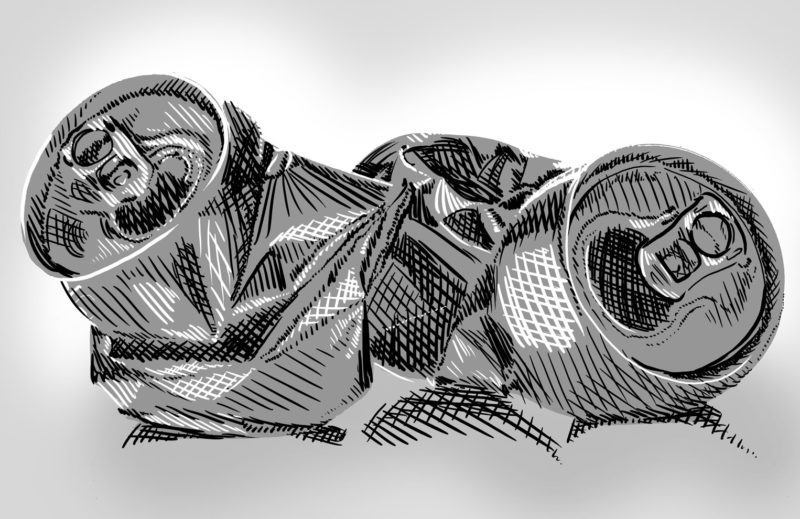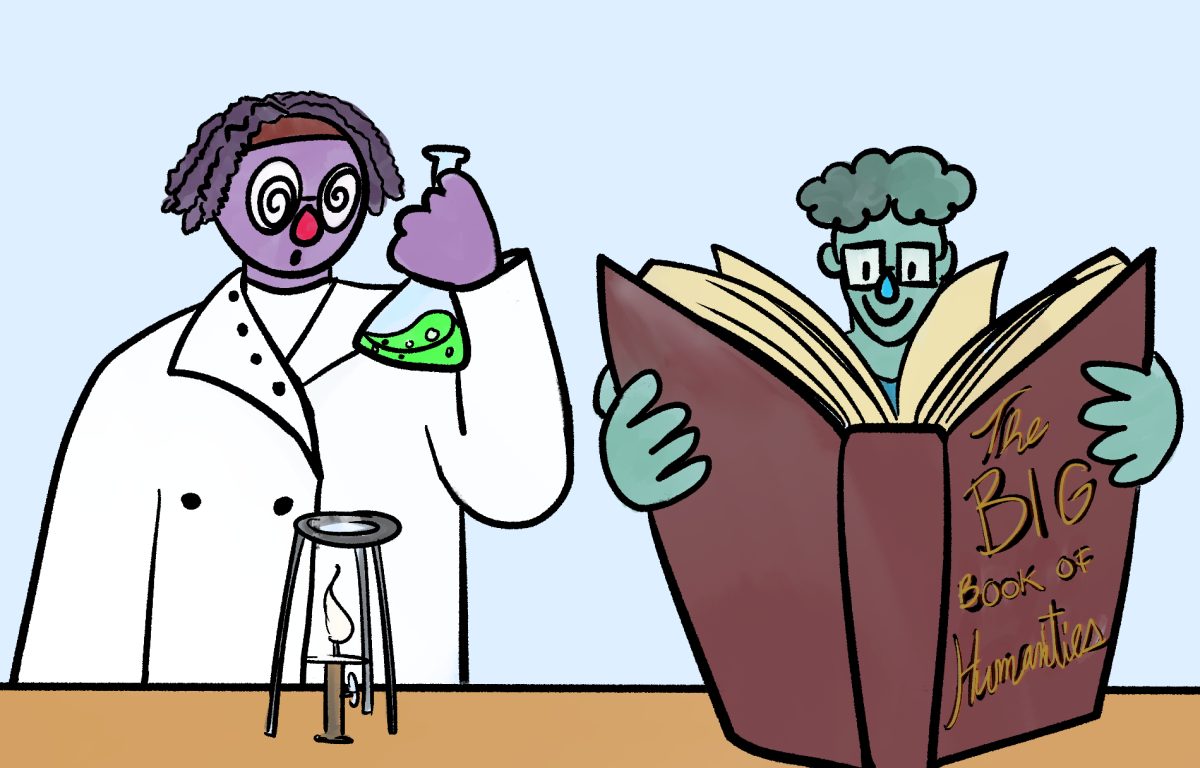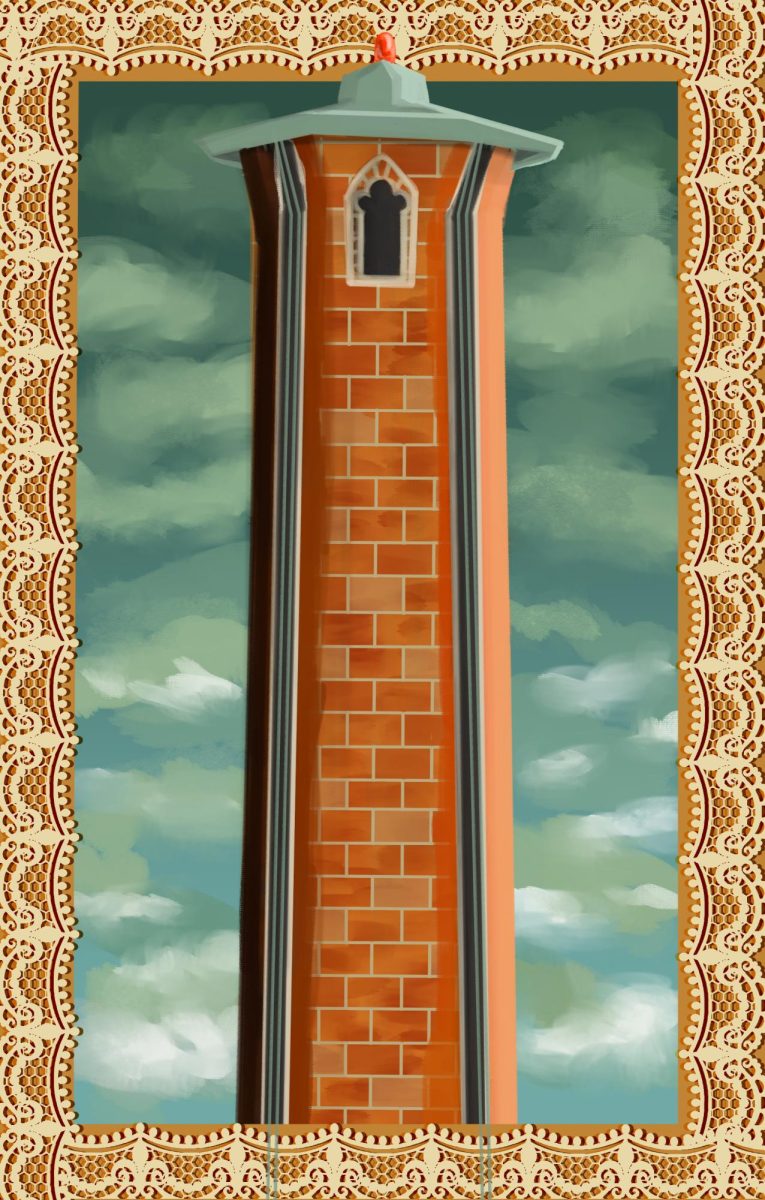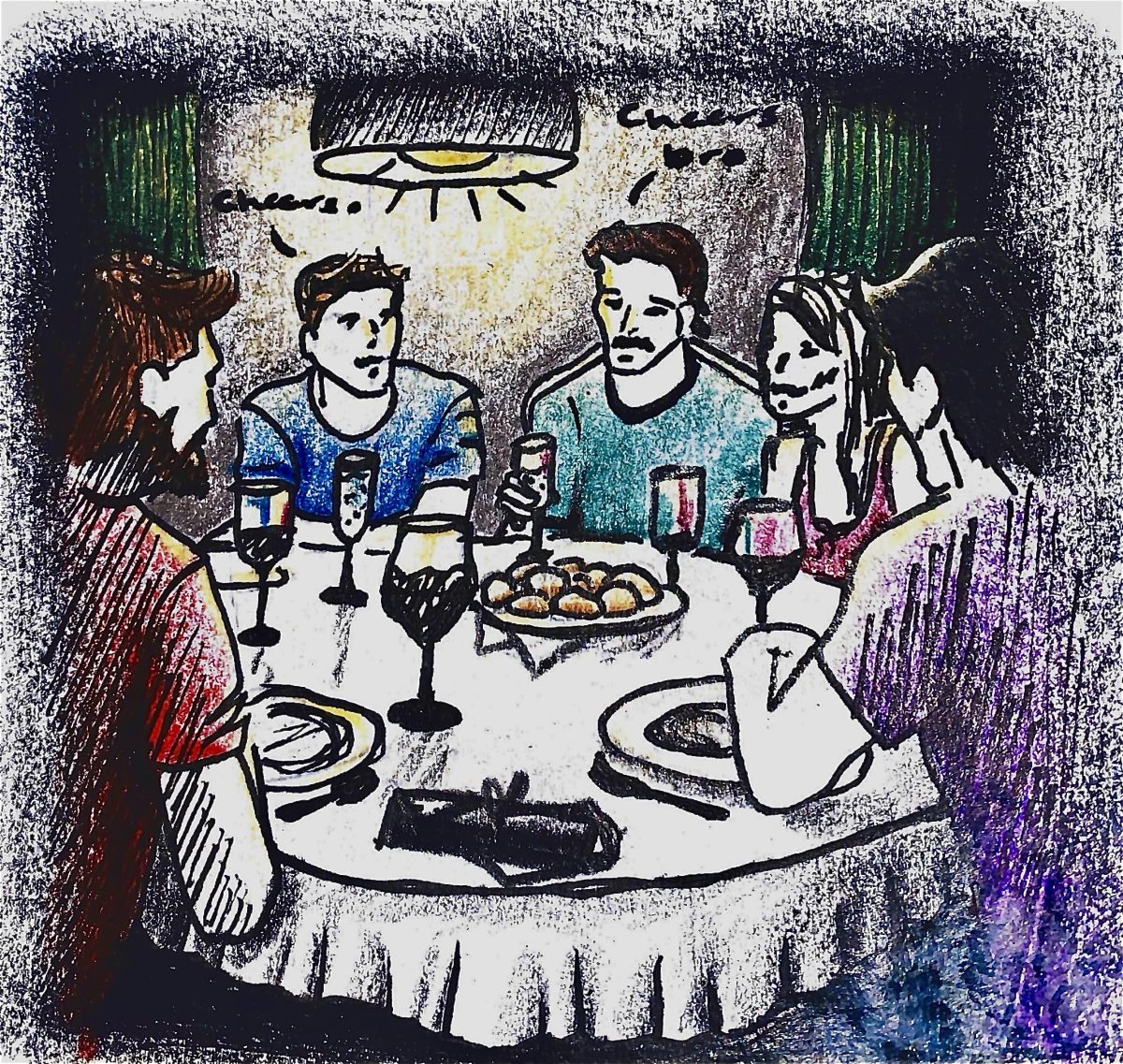Wine cries. People who drink wine have probably noticed the small drops that form around the side of the glass. In a sped-up recording of this phenomenon the droplets look like they are bouncing off the surface of the wine, crawling back up the glass and dripping down again.
Why does this happen? It has to do with surface tension, which is the amount of pull one liquid has on other liquids nearby. Wine is made up of mostly water and alcohol. Alcohol has a lower surface tension, or a lighter pull, and also evaporates more easily than water.
What’s happening with those droplets? The alcohol is evaporating where the wine is thin on the side of the glass; the drops of wine become more water than alcohol. Because they no longer have the same surface tension, the droplets can no longer slip back in with the rest of the wine. Instead, the drops form, fall and reform aimlessly. So the wine cries.
This information comes from a video that Richard N. Zare of Stanford University showed the audience at his lecture last Wednesday, November 8. This lecture was advertised as being centered around “human alcoholysis,” the chemistry behind drinking to excess, but actually discussed a wide range of topics concerning alcohol.
Zare described that womens’ blood alcohol level rises faster, which results in faster intoxication in women than in men who imbibe the same amount. He also described different effects that alcohol can have on people of different cultures and ethnicities for cultural and religious reasons, alcohol consumption per capita is low in India.
Finally, he talked about the causes of drinking problems ”drinking releases endorphins in the brain” as well as some solutions: some medicines may be able to make drinking much less enjoyable by helping with cravings or blocking the high. To make his points, Zare utilized evidence that ranged from chemical equations to personal anecdotes.
“This is real stuff, and yet it’s grounded in multiple things: in chemistry, in biology. I needed math to figure this out, even physics. This doesn’t belong to just one discipline,” Zare said about the body’s response to alcohol.
Christina Cooley, assistant professor in Trinity’s chemistry department, has admired Zare since her graduate school days at Stanford University. She returned to Stanford this past summer to speak at her Ph.D. adviser’s birthday dinner, and reconnected with Zare at that event. They stayed in touch through email, and later on, when Trinity was looking for a science lecturer, Cooley knew just who to suggest.
“He is an amazing scientist and is very well known. For, his biggest achievement, which was the discovery of laser-induced fluorescence. Every year when the Nobel Prizes come around, people are always putting bets on who’s going to win the Nobel Prize, and his name always comes up,” Cooley said.
In addition, Zare is passionate about education and has pushed for protections of women in the sciences.
“The real reason why I wanted to bring him in particular is that he doesn’t just have notoriety for being a really good scientist, but he has notoriety for being very interested in chemical education and interested in teaching chemistry to people. He’s also become more famous in recent years for being a champion for women’s rights in science,” Cooley said. “That was actually how my conversation with him started: I was thanking him for some very groundbreaking measures he did, like he was the first person to institute a pregnancy policy for graduate students in the chemistry department.”
Camille Potts, junior biochemistry and molecular biology major who introduced Zare, was equally excited to have an advocate for women in the sciences brought to campus.
“I think it’s really important that we bring in people who show not only amazing science, but also other values that Trinity holds important. Dr. Zare was an amazing person to bring in, not only because he gave a very good talk about science to the general public, but also because he has been a champion of women in science and of the rights of women and minorities in science. To be able to see someone who has been nominated for a Nobel multiple times fight for these kinds of values and to get to meet him in person I think is awesome,” Potts said.
In addition to his Wednesday lecture, Zare also talked to students, some of whom were able to present their research to him, and gave an additional chemistry seminar last Thursday regarding his primary research.
Zare’s lecture was part of the Distinguished Scientists Lecture Series funded by a gift from the Walter F. Brown family of San Antonio. The next lecture will take place Dec. 4, when Tyrone B. Hayes of the department of integrative biology at the University of California, Berkeley will give his talk titled “From Silent Spring to Silent Night: A Tale of Toads and Men.”







